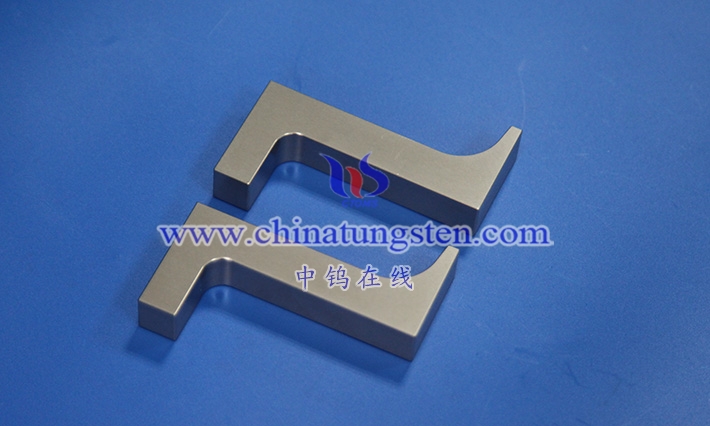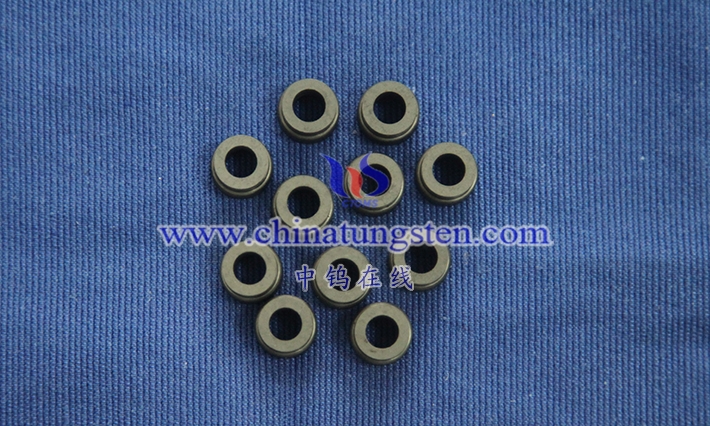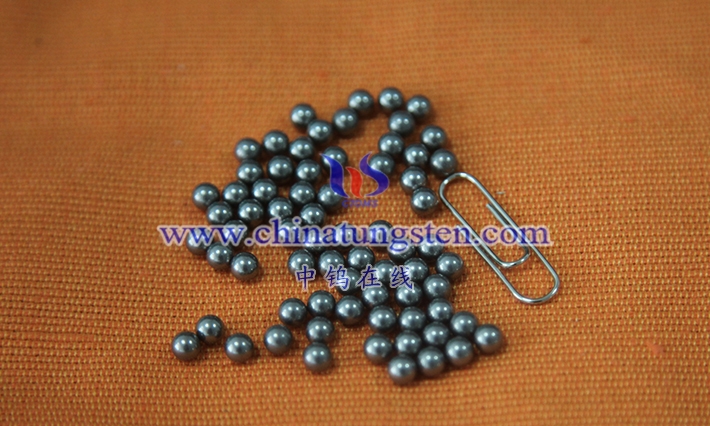
Table of Contents
Chapter 1 Basic Knowledge of Tungsten Alloy Weights
1.1 Definition and Classification of Tungsten Alloy Weights
1.1.1 Definition of Tungsten Alloy Weights
1.1.2 Classification of Tungsten Alloy Weights by Accuracy Grade
1.1.3 Classification of Tungsten Alloy Weights by Application
1.2 Composition System and Property Basis of Tungsten-Based Alloy
1.2.1 Composition of Tungsten Alloy Weights
1.2.2 Effect of Composition on Basic Properties of Tungsten Alloy Weights
1.2.3 Differences in the Properties of Commonly Used Forming Processes for Tungsten Alloy Weights
1.3 Accuracy Grades of Weights and Measurement Transfer Systems
1.3.1 Comparison of Domestic and International Precision Standards for Tungsten Alloy Weights
1.3.2 Basic Process of Transferring the Value of Tungsten Alloy Weights
1.3.3 Transfer Requirements for Different Grades of Tungsten Alloy Weights
Chapter 2 Basic Characteristics of Tungsten Alloy Weights
2.1 Density and Volume Characteristics of Tungsten Alloy Weights
2.1.1 Parameter Range of High Density Tungsten Alloy Weights
2.1.2 Advantages of Tungsten Alloy Weights: Small Volume and High Weight Capacity
2.1.3 The Matching Ratio Characteristics of Volume and Weight of Tungsten Alloy Weights
2.2 Mechanical and Durability Characteristics of Tungsten Alloy Weights
2.2.1 The Manifestation of High Hardness of Tungsten Alloy Weights
2.2.2 High Strength of Tungsten Alloy Weights
2.2.3 Long-Term Wear Resistance of Tungsten Alloy Weights
2.2.4 Environmental Adaptability of Tungsten Alloy Weights to Corrosion Resistance
2.3 Metrological Stability Characteristics of Tungsten Alloy Weights
2.3.1 Factors That Contribute to the Long-Term Stability of the Mass Value of Tungsten Alloy Weights
2.3.2 Effect of Surface Condition on the Measurement Accuracy of Tungsten Alloy Weights
2.3.3 Metrological Assurance Characteristics of Tungsten Alloy Weights Against Magnetic Interference
2.4 Environmental and Safety Characteristics of Tungsten Alloy Weights
2.4.1 Environmental Characteristics of Tungsten Alloy Weights
2.4.2 Low Pollution Characteristics of Tungsten Alloy Weight Production Process
2.4.3 Environmentally Friendly Properties of Tungsten Alloy Weights That Are Easy to Dispose of After Disposal
2.5 Adaptability Characteristics of Tungsten Alloy Weights
2.5.1 Adaptability of Tungsten Alloy Weights in Multiple Environments
2.5.2 Compatibility of Tungsten Alloy Weights with Multiple Devices
2.5.3 Tungsten Alloy Weights’ Application and Adaptability in Multiple Industries
2.6 CTIA GROUP LTD Tungsten Alloy Weights MSDS
Chapter 3 Testing Standards for Tungsten Alloy Weights
3.1 Density and Volume Stability Test of Tungsten Alloy Weights
3.1.1 Standard Method for Density Testing of Tungsten Alloy Weights
3.1.2 Testing Process for Volume Stability of Tungsten Alloy Weights
3.2 Mechanical Properties and Durability Testing of Tungsten Alloy Weights
3.2.1 Testing Method for Hardness of Tungsten Alloy Weights
3.2.1 Testing Methods for the Strength of Tungsten Alloy Weights
3.2.2 Testing Method for Wear Resistance of Tungsten Alloy Weights
3.2.3 Standard Process for Evaluating the Corrosion Resistance of Tungsten Alloy Weights
3.3 Testing the Metrological Performance Stability of Tungsten Alloy Weights
3.3.1 Standard Monitoring Cycle for the Stability of Mass Values of Tungsten Alloy Weights
3.3.2 Detection Method of Tungsten Alloy Weight Surface Condition
3.3.3 Detection Method of Magnetic Interference of Tungsten Alloy Weights
3.4 Environmental Testing of Tungsten Alloy Weights
3.4.1 Environmental Testing Methods for Tungsten Alloy Weights
3.4.2 Testing Specifications for Environmental Protection Indexes in Tungsten Alloy Weight Production
3.4.3 Compliance Testing Requirements for the Disposal of Waste Tungsten Alloy Weights
Chapter 4 Industry Application and Technology Adaptation of Tungsten Alloy Weights
4.1 Application and Adaptation of Tungsten Alloy Weights in Measurement and Calibration
4.1.1 Compatibility Requirements for Tungsten Alloy Weights Used for Electronic Balance Calibration
4.1.2 Accuracy Matching of Tungsten Alloy Weights Used for Calibration of Platform Scales, Floor Scales, and Other Weighing Instruments
4.1.3 Stability Adaptation of Tungsten Alloy Weights for Dynamic Weighing Equipment Calibration
4.2 Application and Adaptation of Tungsten Alloy Weights in Precision Manufacturing
4.2.1 Accuracy Adaptation of Tungsten Alloy Weights for Automotive Parts Weighing
4.2.2 Miniaturization Application of Tungsten Alloy Weights for Semiconductor Wafers
4.2.3 Miniaturization of Tungsten Alloy Weights for Chip Support
4.2.4 Compatibility and Adaptation of Tungsten Alloy Weights for Online Weighing Modules in Automated Production Lines
4.3 Adaptation of Tungsten Alloy Weights in Special Environmental Applications
4.3.1 High Temperature Resistance of Tungsten Alloy Weights for High Temperature Environments
4.3.2 Radiation Protection Design and Adaptation of Tungsten Alloy Weights for Radiation Environments
4.3.3 Pressure-Resistant Seal Adaptation of Tungsten Alloy Weights for Deep-Sea Environments
4.3.4 Corrosion-Resistant Adaptation of Tungsten Alloy Weights for Use in Wet/Corrosive Environments
4.4 Application and Adaptation of Tungsten Alloy Weights in Trade Settlement
4.4.1 Compliance and Adaptation of Tungsten Alloy Weights for Import and Export Commodity Weighing
4.4.2 Tungsten Alloy Weights for Precious Metal Trading Weighing
4.4.3 Stability Adaptation of Tungsten Alloy Weights for Industrial Raw Materials Settlement
4.5 Application and Adaptation of Tungsten Alloy Weights in Scientific Research Experiments
4.5.1 Standard Weight Adaptation for Tungsten Alloy Weights Used in Material Mechanics Experiments
4.5.2 High-Precision Applications of Tungsten Alloy Weights in Astrophysical Experiments
4.5.3 Stability Adaptation of Tungsten Alloy Weights for Environmental Simulation Experiments
4.6 Application and Adaptation of Tungsten Alloy Weights in Medical Equipment
4.6.1 Sanitary Adaptation of Tungsten Alloy Weights for Calibration of Medical Scales
4.6.2 Radiation Protection of Tungsten Alloy Weights Used as Counterweights in Radiotherapy Equipment
4.6.3 Micro-Applications of Tungsten Alloy Weights for Precision Medical Instrument Components
Chapter 5 Selection, Calibration and Life Cycle Management of Tungsten Alloy Weights
5.1 Technical Guidelines for the Selection of Tungsten Alloy Weights
5.1.1 Tungsten Alloy Weight Selection Principles Based on Weighing Range
5.1.2 Tungsten Alloy Weight Selection Considerations Based on Environmental Conditions
5.1.3 Tungsten Alloy Weight Selection Based on Precision Requirements
5.2 Verification and Calibration Process of Tungsten Alloy Weights
5.2.1 Basic Items and Requirements for Verification of Tungsten Alloy Weights
5.2.2 Basis for Setting the Calibration Period of Tungsten Alloy Weights
5.2.3 Processing Procedure for Unqualified Tungsten Alloy Weights
5.3 Daily Maintenance and Failure Determination of Tungsten Alloy Weights
5.3.1 Cleaning and Storage Specifications for Tungsten Alloy Weights
5.3.2 Identification of Common Damage to Tungsten Alloy Weights
5.3.3 Technical Standards for Determining Failure of Tungsten Alloy Weights
5.4 Traceability System for Tungsten Alloy Weights
5.4.1 Tier Classification of Tungsten Alloy Weight Traceability
5.4.2 Management Requirements for Traceability Records of Tungsten Alloy Weights
5.4.3 Collaborative Mechanism for Cross-Regional Traceability of Tungsten Alloy Weights
Chapter 6 Basic Knowledge and Horizontal Comparison of Tungsten Alloy Weights
6.1 Basic Knowledge of Tungsten Alloy Weights
6.1.1 Common Misunderstandings in Using Tungsten Alloy Weights and How to Avoid Them
6.1.2 Precautions for Daily Storage and Handling of Tungsten Alloy Weights
6.1.3 Common Causes and Preventions of Tungsten Alloy Weight Accuracy Loss
6.2 Performance Comparison between Tungsten Alloy Weights and Cast Iron Weights
6.2.1 Density Comparison between Tungsten Alloy Weights and Cast Iron Weights
6.2.2 Volume Comparison of Tungsten Alloy Weights and Cast Iron Weights
6.2.3 Comparison of Weight-Bearing Capacity between Tungsten Alloy Weights and Cast Iron Weights
6.2.4 Comparison of Wear Resistance between Tungsten Alloy Weights and Cast Iron Weights
6.2.5 Comparison of Corrosion Resistance of Tungsten Alloy Weights and Cast Iron Weights
6.2.6 Comparison of Service Life between Tungsten Alloy Weights and Cast Iron Weights
6.2.7 Comparison of Measurement Accuracy and Stability between Tungsten Alloy Weights and Cast Iron Weights
6.2.8 Comparison of Environmental Adaptability between Tungsten Alloy Weights and Cast Iron Weights
6.3 Performance Comparison of Tungsten Alloy Weights and Stainless Steel Weights
6.3.1 Comparison of Material Cost and Cost-Effectiveness between Tungsten Alloy Weights and Stainless Steel Weights
6.3.2 Comparison of Diamagnetism between Tungsten Alloy Weights and Stainless Steel Weights
6.3.3 Comparison of Impact Resistance between Tungsten Alloy Weights and Stainless Steel Weights
6.3.3 Comparison of Application Scenarios and Industry Adaptability of Tungsten Alloy Weights and Stainless Steel Weights
6.4 Performance Comparison of Tungsten Alloy Weights and Lead Alloy Weights
6.4.1 Comparison of Environmental Performance between Tungsten Alloy Weights and Lead Alloy Weights
6.4.2 Comparison of Density Uniformity and Measuring Stability between Tungsten Alloy and Lead Alloy Weights
6.4.3 Comparison of Disposal Costs and Environmental Impacts of Tungsten Alloy and Lead Alloy Weights
Appendix
Appendix 1 China Tungsten Alloy Weight Standard
Appendix 2 International Tungsten Alloy Weight Standards
Appendix 3 Tungsten Alloy Weight Standards in Europe, America, Japan, South Korea and Other Countries
Appendix 4 Material Terminology for Tungsten Alloy Weights
Appendix 5 Technical Terminology for Tungsten Alloy Weights
Appendix 6 Performance Terms of Tungsten Alloy Weights
Appendix 7 Application Terms of Tungsten Alloy Weights
Chapter 1 Basic Knowledge of Tungsten Alloy Weights
Tungsten alloy weights play an important role in many fields. Their unique physical and chemical properties make them highly favored in industrial, scientific research, and commercial applications.
1.1 Definition and Classification of Tungsten Alloy Weights
Tungsten alloy weights are standard mass instruments made primarily of tungsten and combined with other metal elements (such as nickel, iron, and copper). They are used to calibrate balances and scales, ensuring the accuracy and reliability of measurement results. Their high density, corrosion resistance, and mechanical strength give them significant advantages in precision measurement. Tungsten alloy weights are available in various categories based on their application, accuracy level, and shape, meeting diverse measurement needs.
1.1.1 Definition of Tungsten Alloy Weights
tungsten alloy weights can be understood from three perspectives: composition, function, and application. First, from the perspective of material composition, tungsten alloy weights are alloy products primarily composed of tungsten, typically containing over 90% tungsten, supplemented by elements such as nickel, iron, or copper to enhance their processability and mechanical strength. Tungsten’s high density (approximately 19.25 g/cm³) allows it to achieve a high mass within a small volume, a key characteristic that distinguishes it from other metal weights, such as stainless steel or brass. The chemical stability of tungsten alloys also makes it resistant to oxidation and corrosion over long-term use, ensuring consistent quality.
From a functional perspective, tungsten alloy weights are standardized instruments used to calibrate and verify the quality of weighing instruments. In metrology, the quality of weights must conform to international or national standards (such as OIML or JJG standards) to ensure their reliability during the calibration process. Tungsten alloy weights, due to their high density and low volume, are particularly suitable for calibrating small balances requiring high precision, such as laboratory analytical balances or microbalances. Furthermore, tungsten alloy weights exhibit excellent wear resistance, maintaining their surface finish and mass stability even during frequent use, thereby reducing errors caused by wear.
From an application perspective, tungsten alloy weights are widely used in laboratories, industrial production, and commercial metrology. For example, in the pharmaceutical industry, tungsten alloy weights are used to calibrate high-precision scales to ensure the accuracy of drug formulations; in the jewelry industry, their high-precision properties meet the needs of precious metal weighing; and in scientific research, tungsten alloy weights provide a reliable mass benchmark for high-precision experiments. The terminology definition of tungsten alloy weights extends beyond their physical properties to encompass their functional role within standardized metrology systems, making them an indispensable component of modern metrology.
READ MORE:What Are Tungsten Alloy Weights
===================================================================
Customized R&D and Production of Tungsten, Molybdenum Products
Chinatungsten Online and CTIA GROUP LTD have been working in the tungsten industry for nearly 30 years, specializing in flexible customization of tungsten and molybdenum products worldwide, which are tungsten and molybdenum design, R&D, production, and overall solution integrators with high visibility and credibility worldwide.
Chinatungsten Online and CTIA GROUP LTD provide products mainly including: tungsten oxide products, such as tungstates such as APT/WO3; tungsten powder and tungsten carbide powder; tungsten metal products such as tungsten wire, tungsten ball, tungsten bar, tungsten electrode, etc.; high-density alloy products, such as dart rods, fishing sinkers, automotive tungsten crankshaft counterweights, mobile phones, clocks and watches, tungsten alloy shielding materials for radioactive medical equipment, etc.; tungsten silver and tungsten copper products for electronic appliances. Cemented carbide products include cutting tools such as cutting, grinding, milling, drilling, planing, wear-resistant parts, nozzles, spheres, anti-skid spikes, molds, structural parts, seals, bearings, high-pressure and high-temperature resistant cavities, top hammers, and other standard and customized high-hardness, high-strength, strong acid and alkali resistant high-performance products. Molybdenum products include molybdenum oxide, molybdenum powder, molybdenum and alloy sintering materials, molybdenum crucibles, molybdenum boats, TZM, TZC, molybdenum wires, molybdenum heating belts, molybdenum spouts, molybdenum copper, molybdenum tungsten alloys, molybdenum sputtering targets, sapphire single crystal furnace components, etc.
If you are interested in related products, please contact us:
Email: sales@chinatungsten.com|
Tel: +86 592 5129696 / 86 592 5129595






